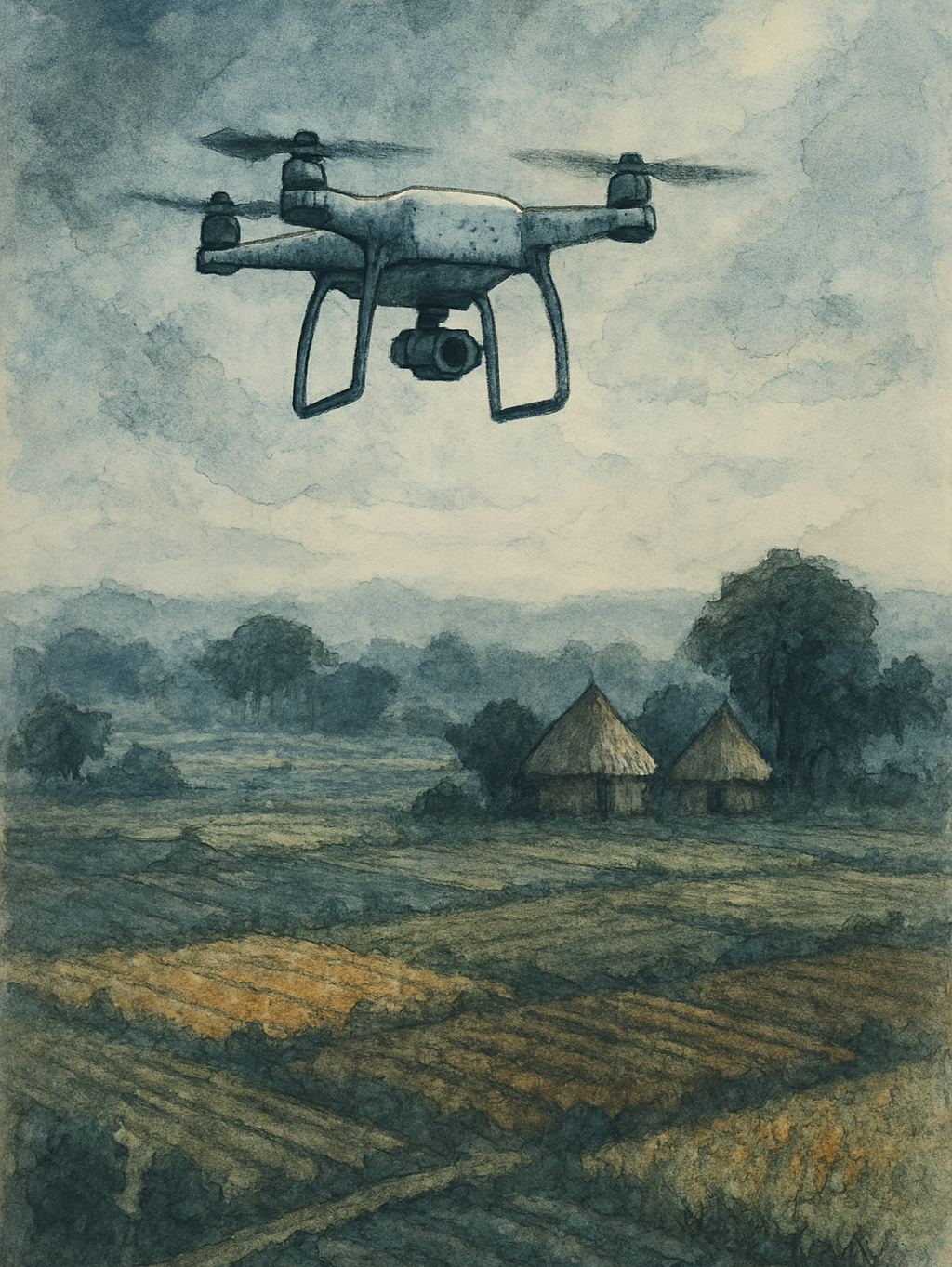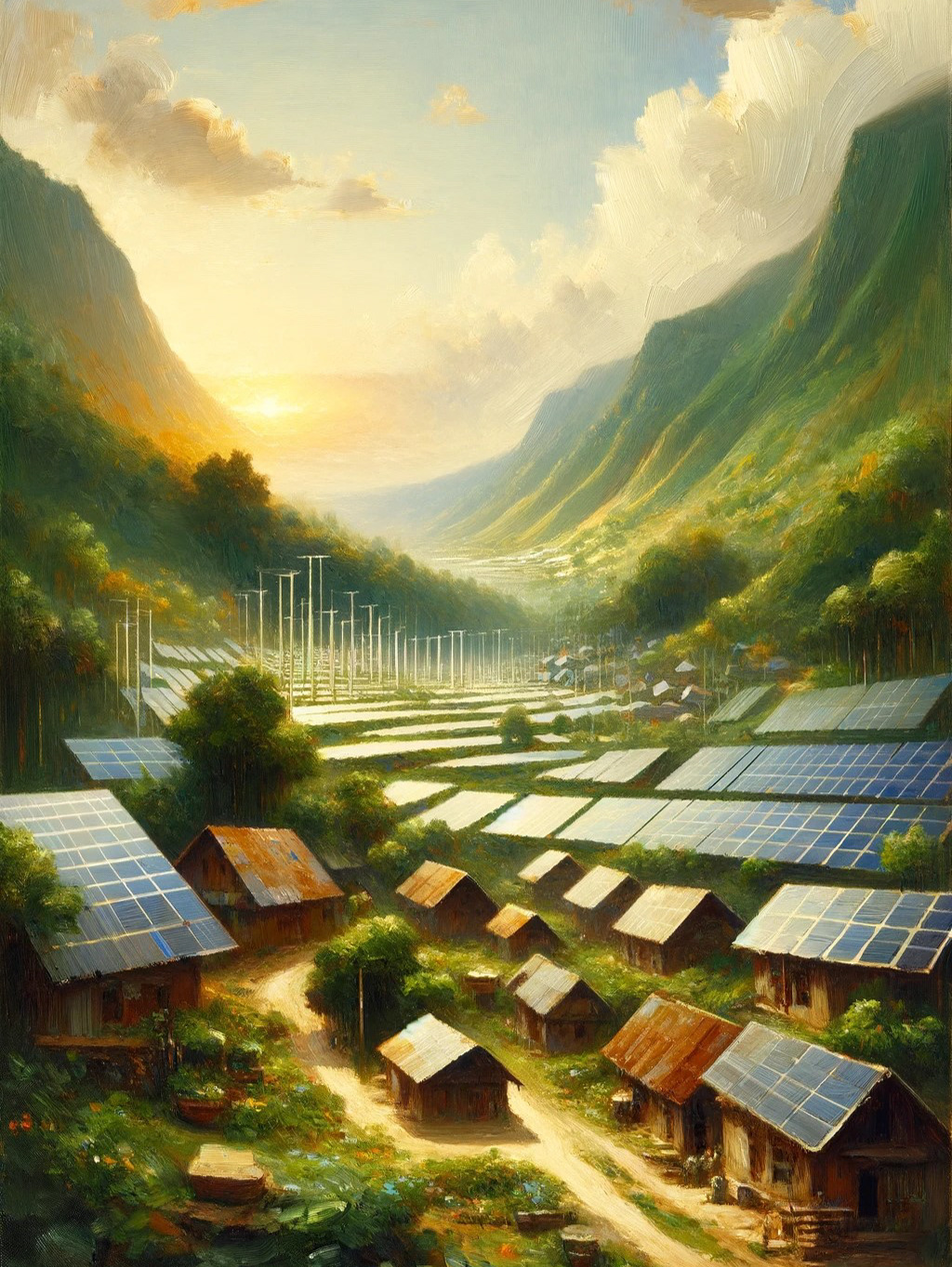TL;DR
Controlled Environment Agriculture (CEA) is emerging as a game-changer in sustainable food production, addressing global challenges like climate change, resource scarcity, and urbanization. By leveraging cutting-edge technologies such as hydroponics, aeroponics, aquaponics, and advanced climate control, CEA enables high-yield, resource-efficient crop cultivation independent of external environmental conditions. This approach not only promises to enhance food security but also minimizes environmental impact through significant water conservation and reduced pesticide use.
Innovative CEA Technologies: Integration of Artificial Intelligence (AI) and the Internet of Things (IoT) for real-time environmental monitoring and management, alongside energy-efficient LED lighting tailored to plant growth requirements, marks significant advancements in CEA.
Economically, while CEA demands substantial initial investment and operational costs, particularly in energy consumption, its long-term benefits include increased efficiency, productivity, and potential for profitability, especially with strategic crop selection and market positioning. The proximity to urban centers also reduces distribution costs and supports fresher produce delivery, aligning with consumer preferences for local, sustainable food sources.
Environmental and Social Impact: CEA stands out for its resource efficiency, notably in water use, and its potential to significantly reduce the carbon footprint associated with traditional agriculture, especially when integrated with renewable energy sources. Furthermore, urban CEA installations bolster food security in densely populated areas and offer new educational and employment opportunities, contributing to community engagement and sustainable urban development.
Despite its promise, CEA faces challenges such as high setup and operating costs, the need for specialized skills, and the current limitation to a narrow range of crops. Future directions involve overcoming these barriers, expanding crop diversity, and further integrating renewable energy to enhance the sustainability and scalability of CEA practices, ensuring its vital role in global food security and sustainable agriculture.
Revolutionizing Sustainable Food Production in the 21st Century
Abstract
Controlled Environment Agriculture (CEA) stands as a pivotal innovation in the quest to meet the escalating global food demands amidst the challenges of climate change, resource scarcity, and urbanization. This in-depth paper explores the multifaceted dimensions of CEA, from its foundational technologies and systems to its economic, environmental, and social impacts. By integrating state-of-the-art technologies such as hydroponics, aeroponics, and aquaponics with advanced climate control and artificial intelligence, CEA offers a sustainable and efficient alternative to traditional agriculture, promising higher yields, resource conservation, and enhanced food security. This comprehensive analysis delves into the potential of CEA to transform agricultural practices, addresses the associated challenges, and outlines future research directions to optimize its global implementation.
1. Introduction
The global agricultural landscape is undergoing a transformation, driven by the need to produce more food sustainably in the face of diminishing natural resources, growing urban populations, and the adverse effects of climate change. Controlled Environment Agriculture (CEA) emerges as a key solution, leveraging advanced technologies to create optimized growing conditions for crops, irrespective of external environmental factors. This paper presents a thorough exploration of CEA, examining its evolution, technological underpinnings, and its pivotal role in redefining the future of agriculture.
2. CEA Systems and Technologies
2.1 Overview of CEA Systems
CEA encompasses a broad spectrum of agricultural practices, including traditional greenhouses, sophisticated high-tech greenhouses, and innovative vertical farms. Each system offers unique advantages and challenges, from the cost-effectiveness and simplicity of traditional greenhouses to the high efficiency and technological complexity of vertical farms.
2.2 Hydroponics, Aeroponics, and Aquaponics
The core of CEA lies in soilless cultivation techniques such as hydroponics, aeroponics, and aquaponics, which offer significant water and nutrient efficiency. Hydroponics, the growth of plants in a nutrient-rich water solution, minimizes water usage and eliminates soil-borne diseases. Aeroponics further optimizes resource use by misting roots with nutrients, while aquaponics integrates fish farming with hydroponics, creating a symbiotic ecosystem that enhances sustainability.
2.3 Advanced Technologies in CEA
Innovative technologies have become the cornerstone of Controlled Environment Agriculture (CEA), propelling it into the future of sustainable farming. The integration of Artificial Intelligence (AI) and the Internet of Things (IoT) has marked a significant evolution in how environmental conditions within CEA systems are monitored and managed. AI leverages complex algorithms to analyze data from IoT sensors that monitor a myriad of factors, including temperature, humidity, CO2 levels, and light intensity. This data-driven approach enables the creation of predictive models and adaptive algorithms that can anticipate the needs of plants and adjust environmental parameters in real-time, ensuring optimal growth conditions while enhancing resource efficiency. According to a study by Grand View Research, the global smart agriculture market, encompassing AI and IoT technologies, is expected to reach USD 20.71 billion by 2027, underscoring the rapid adoption and investment in these technologies within the agricultural sector.
LED lighting has been another transformative technology within CEA, providing a sustainable and energy-efficient alternative to traditional lighting systems. Unlike conventional light sources, LEDs can be fine-tuned to emit specific light spectra, which play a crucial role in plant photosynthesis and development. This spectrum-specific lighting not only maximizes photosynthetic efficiency but also allows for the manipulation of plant traits such as flavor, nutrition, and growth speed, opening new avenues for crop customization. Research published in the journal "Biosystems Engineering" highlights that LED lighting can improve plant biomass production by up to 40% compared to fluorescent lighting, illustrating the potential for significant yield enhancements in CEA systems.
Moreover, the synergy between AI, IoT, and LED technologies in CEA fosters a more sustainable and precise approach to agriculture. By utilizing AI to interpret data from IoT sensors, CEA systems can optimize the use of LED lighting, adjusting intensity and spectra to match the plants' diurnal and developmental needs, thereby reducing energy consumption. This optimization not only conserves energy but also significantly reduces the operational costs associated with CEA, making it a more viable option for a broader range of producers. The integration of these advanced technologies signifies a shift towards more intelligent, efficient, and sustainable agricultural practices, with the potential to redefine food production in the face of global environmental and resource challenges.
3. Economic Aspects of CEA
3.1 Initial Investment and Operational Costs
Transitioning to high-tech Controlled Environment Agriculture (CEA) systems requires substantial initial investments, with costs significantly varying based on the scale and sophistication of the setup. As of 2024, constructing a state-of-the-art vertical farm can demand an initial outlay ranging from $80 to $250 per square foot, translating into millions for large-scale operations. This investment covers advanced infrastructure, automated climate control systems, LED lighting, and hydroponic or aeroponic irrigation systems. For example, a 10,000 square foot vertical farm could require an initial capital of approximately $800,000 to $2.5 million. Operational expenses further compound the financial challenge, with energy for lighting and climate control being particularly substantial. In a typical CEA facility, energy costs can account for 25-40% of operational expenses, driven by the need for 24/7 artificial lighting and precise temperature and humidity control.
Despite these significant costs, the efficiency and productivity of CEA systems can justify the investment. The ability to produce high yields in a controlled environment, with multiple harvests per year and minimal resource wastage, enhances the long-term economic viability of CEA operations. Innovations in energy-efficient technologies and renewable energy integration are key to reducing operational costs and improving the sustainability and profitability of CEA ventures.
3.2 Market Potential and Profitability
The profitability of CEA ventures is closely tied to strategic crop selection and market positioning. In 2024, high-demand, high-value crops such as specialty lettuces, microgreens, and culinary herbs present attractive margins for CEA producers. For instance, the wholesale price for organic microgreens can range from $25 to $50 per pound, offering significant revenue potential. The proximity of CEA operations to urban centers reduces distribution costs and allows for fresher produce, further enhancing market appeal and consumer willingness to pay a premium.
Market dynamics and consumer preferences play a crucial role in shaping the profitability of CEA ventures. The growing consumer demand for locally sourced, sustainable, and pesticide-free produce creates a favorable market environment for CEA products. Case studies from 2024 indicate that well-managed CEA operations can achieve profitability within 3 to 5 years, contingent upon efficient operational management, energy use optimization, and effective marketing strategies. The integration of CEA into local food systems and the development of direct-to-consumer sales channels can further increase profitability by capturing more value within the supply chain.
4. Environmental Sustainability of CEA
4.1 Resource Efficiency and Conservation
Controlled Environment Agriculture (CEA) significantly transforms resource utilization in farming, achieving unprecedented levels of water efficiency. Research indicates that CEA systems can reduce water usage by up to 90% compared to traditional soil-based agriculture. This is primarily due to the recirculation of water in closed systems, such as in hydroponics and aquaponics, where evaporation and runoff are minimized. Furthermore, the precision application of nutrients in CEA systems reduces the excess and waste commonly associated with conventional fertilizer application, further protecting water bodies from nutrient pollution.
The reduction in pesticide use is another hallmark of CEA's resource efficiency. By isolating crops from external environments and pests, CEA facilities drastically reduce the need for chemical interventions, leading to cleaner produce and less environmental contamination. This not only preserves biodiversity in surrounding ecosystems but also aligns with the increasing consumer demand for organically grown foods.
4.2 Carbon Footprint and Energy UseThe localization of CEA production facilities near urban centers diminishes the carbon emissions associated with long-distance food transport. For instance, vertically farmed produce can be delivered to consumers within the same city, significantly reducing food miles and associated CO2 emissions. However, the energy demands of CEA, particularly for artificial lighting in vertical farms, present a significant environmental challenge. Studies suggest that the carbon footprint of certain CEA operations could be higher than that of traditional farming, depending on the source of electricity.
To address the energy consumption issue, many CEA facilities are turning to renewable energy sources, such as solar and wind power, to sustain their operations. The integration of solar panels on greenhouse roofs or the use of off-grid wind turbines can provide clean energy, reducing reliance on fossil fuels and lowering the carbon footprint of CEA systems. Moreover, advancements in LED lighting technology are continually increasing energy efficiency, with newer models using up to 50% less energy than traditional lighting systems while providing optimal light spectra for plant growth.
Energy-efficient climate control systems are also pivotal in reducing the environmental impact of CEA. Innovations in heating, ventilation, and air conditioning (HVAC) systems, coupled with smart automation, can dynamically adjust environmental parameters, minimizing energy use while maintaining ideal growing conditions. These efforts collectively contribute to making CEA a more sustainable agricultural practice, aligning with global environmental conservation goals.
5. Social and Community Implications
5.1 Urban Agriculture and Food Security
The integration of Controlled Environment Agriculture (CEA) within urban settings is actively reshaping the landscape of urban food production, offering a sustainable solution to the challenges of food security in densely populated areas. Recent studies highlight the potential of urban CEA installations to meet a significant portion of urban food demand, with vertical farms in cities like Singapore and Tokyo producing upwards of 20 times more yield per square meter than traditional outdoor farms. This high-density production capability is crucial in cities where space is at a premium, enabling the efficient use of underutilized areas such as rooftops and vacant lots for food production.
CEA's ability to provide consistent, year-round crop production can significantly enhance urban food resilience, reducing dependency on rural agriculture and long supply chains that are vulnerable to disruptions from climate change or geopolitical tensions. In cities implementing CEA, there has been a noticeable reduction in food miles, with some urban farms delivering produce directly to consumers or local retailers within the same day of harvest, ensuring unparalleled freshness and nutrient retention.
5.2 Educational and Employment Opportunities
CEA's role in fostering educational and employment opportunities within urban environments extends beyond traditional farming roles, encompassing a wide range of technical and scientific positions. For instance, the operation of high-tech CEA facilities requires a skilled workforce proficient in plant science, engineering, data analytics, and system management, contributing to job diversification and upskilling in the urban workforce.
Educational programs and partnerships between CEA ventures and local institutions have begun to emerge, offering training in these specialized areas and preparing urban populations for careers in this innovative sector.
The social impact of CEA also manifests in its capacity to engage communities and foster a deeper understanding of sustainable agriculture practices. Urban CEA projects often serve as living laboratories, offering workshops, tours, and interactive experiences that educate the public about the importance of sustainability, local food systems, and nutrition. This hands-on approach to learning not only cultivates agricultural knowledge and skills but also strengthens community bonds and encourages a collective commitment to environmental stewardship and health-conscious living.
6. Challenges and Future Directions
6.1 Technological and Economic Barriers
The high initial costs associated with setting up CEA systems pose a significant barrier, particularly for small-scale operators and newcomers to the field. Advanced CEA setups, equipped with the latest in LED lighting, climate control, and automation systems, can require substantial investment, often running into millions of dollars for commercial-scale operations. This financial barrier is compounded by the high operational costs, primarily due to energy consumption for lighting and environmental control, which can deter potential investors and limit the scalability of CEA ventures.
The complexity of CEA systems necessitates a high level of expertise in various disciplines, including plant science, engineering, and data analysis. The shortage of skilled professionals in these specialized areas can hinder the efficient operation and innovation within CEA enterprises. Addressing these challenges requires concerted efforts in education and training, alongside financial incentives such as grants, subsidies, and favorable loan terms to lower the entry barriers for new participants in the CEA sector.
6.2 Expanding Crop Diversity
While CEA has proven highly effective for leafy greens and certain vegetables, extending its application to a broader array of crops, including staple grains and fruits, remains a challenge. The key to diversifying the range of crops suitable for CEA lies in ongoing research into plant genetics, cultivation techniques, and system design.
Innovations that allow for the cost-effective adaptation of CEA systems to the requirements of a wider variety of crops could significantly enhance global food security and nutritional diversity.
6.3 Integrating Renewable Energy
The integration of renewable energy sources into CEA systems is pivotal for enhancing their sustainability and reducing operational costs.
Solar energy, in particular, holds great promise due to the synergistic relationship between solar panel installations and greenhouse operations. For instance, solar panels can be installed on greenhouse roofs or unused land nearby, generating clean energy to power the CEA systems while potentially providing shade that can be beneficial for certain crops.
Wind and biomass energy also offer viable alternatives, especially in regions where these resources are abundant. The adoption of renewable energy in CEA not only aligns with global sustainability goals but also serves to mitigate one of the primary economic barriers to CEA adoption by reducing the long-term energy costs associated with these systems.
7. Conclusion
Controlled Environment Agriculture represents a transformative approach to sustainable food production, offering solutions to some of the most pressing challenges facing the global agricultural sector. By harnessing advanced technologies and innovative cultivation methods, CEA has the potential to significantly increase crop yields, conserve resources, and contribute to environmental sustainability. However, realizing this potential requires overcoming economic and technological hurdles, expanding the range of crops, and integrating renewable energy sources. Future research and collaborative efforts across sectors are essential to optimize CEA's contribution to global food security and sustainable development.
References
Despommier, D. (2010). The Vertical Farm: Feeding the World in the 21st Century. St. Martin's Press.
Jensen, M. H., & Collins, W. L. (Eds.). (1985). Controlled Environment Agriculture: A Global Review of Greenhouse Food Production. Elsevier.
Kozai, T., Niu, G., & Takagaki, M. (Eds.). (2015). Plant Factory: An Indoor Vertical Farming System for Efficient Quality Food Production. Academic Press.
Touliatos, D., Dodd, I. C., & McAinsh, M. R. (2016). Vertical farming increases lettuce yield per unit area compared to conventional horizontal hydroponics. Food and Energy Security, 5(3), 184-191.
Baudoin, W., Nono-Womdim, R., Lutaladio, N., Hodder, A., Castilla, N., Leonardi, C., ... & Tognoni, F. (2013). Good Agricultural Practices for Greenhouse Vegetable Crops: Principles for Mediterranean Climate Areas. FAO.









